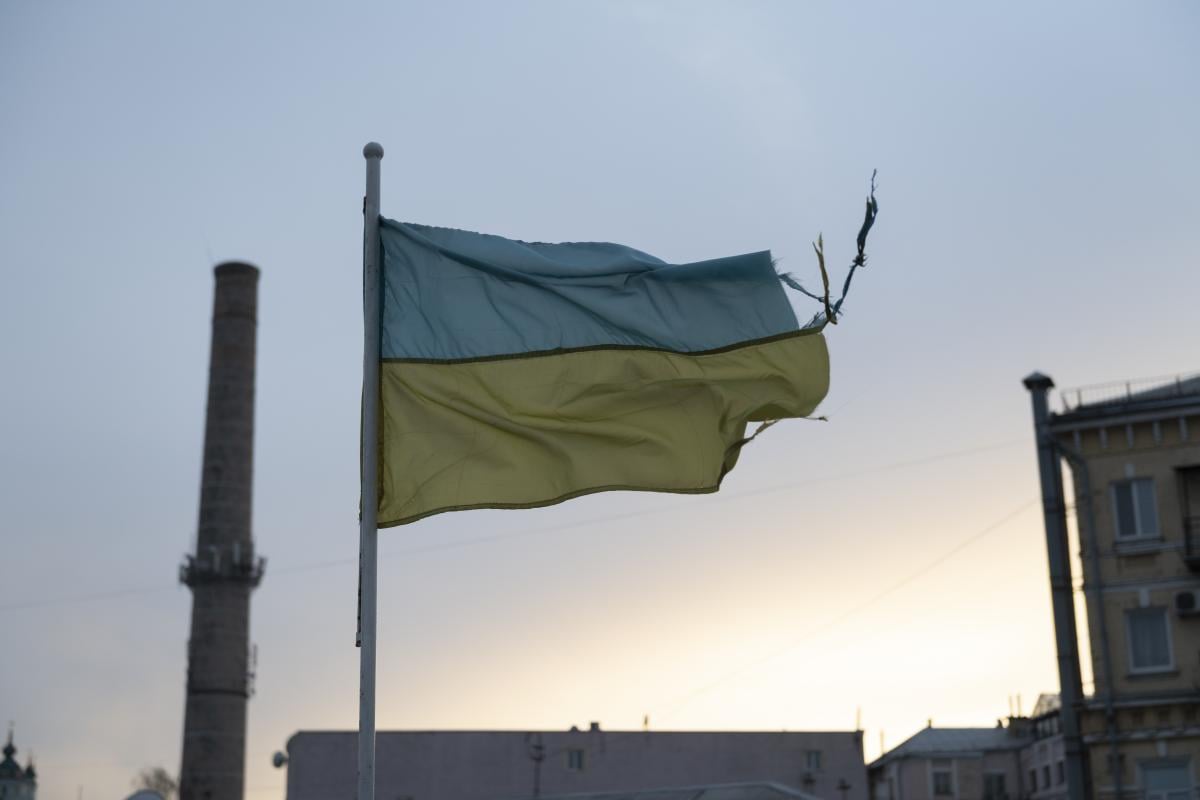
Viktoriia Yevtushenko, a freshman at Pace University, is caught between two worlds.
Back home in Ukraine, her country is under siege from hostile Russian forces, which prompted her family to flee, losing their home and business in the process. But in the U.S., life continues as normal on Pace’s New York City campus, thousands of miles from the war.
“It’s like living in two different realities. There’s a war and people are dying. But at the same time here, everything is fine,” Yevtushenko said. “Everybody is smiling, and everything is OK.”
While the war may seem distant, its challenges have reached Yevtushenko in the U.S. When her family lost their home and business, her financial situation changed almost overnight.
“My family had money to pay for this semester, including my housing and meal plan,” Yevtushenko said. “Right now, I’m OK. I know that I can be here through May. But after May, I don’t know.”
With her family now in Germany, Yevtushenko faces an uncertain financial future. Many other Ukrainian students in the U.S. are grappling with the same issue, their financial situation suddenly and violently changed by a Russian invasion that has devastated cities and families.
Many Russian students in the U.S. have also seen their financial positions change rapidly as well, thanks to the sudden devaluation of the ruble.
According to the 2021 Open Doors report from the Institute of International Education, there were 4,085 Russian and 1,739 Ukrainian students in the U.S. for the 2020–21 academic year. Of the Russian students, 2,022 were undergraduates, 1,663 were graduate students, 317 were studying on nondegree tracks and 803 were in optional practical training programs. For Ukrainian nationals, IIE counted 877 undergraduates, 529 grad students, 48 on nondegree tracks and 285 enrolled in OPT.
Now thousands of those students need help.
University Responses
Pace University is home to 33 Russian students and 12 Ukrainian students. Pace is trying to meet their needs, which President Marvin Krislov notes can be as varied as the students themselves.
“I think the majority of these students are graduate students,” he said. “Some of them may be wrapping up their education; some of them are still in the middle of it. So really, it’s an individual circumstance.”
Krislov added that Pace is reaching out to foundations, community partners and churches to help support the students.
Key concerns, he said, are basic needs such as food and housing. In response, the university has channeled some funding to students through its Pace Cares emergency fund. But there are numerous other challenges for students, including their mental and emotional health. Krislov also emphasizes the importance of creating a community where students feel welcomed and supported by Pace employees and classmates in this time of need.
“What we see is that when students are going through these experiences, they’re very disconnected from their typical support base, and they may not even be in touch with family, because communications may be cut or are very difficult,” Krislov said. “And it’s really important for us to embrace them, to try to help them and to listen to them. That’s what we’re trying to do.”
Group counseling sessions are one way Pace is seeking to serve students affected by the war. Richard Shadick, director of Pace’s Counseling Center, said group sessions allow students to unpack the emotional burdens of their attachment to the war. He has observed feelings of fear, isolation and uncertainty, tied both to financial challenges and to concern for their family and friends.
“For the Ukrainian students, many of them feel stuck and isolated here in the States, unable to return to their country without taking a significant risk to their physical safety. In some respects, they’re cut off from their financial support, because their family is either out of a job, or they’re out of the country, or they’re fighting for their lives,” Shadick said. “Ironically, to a similar extent, our Russian students are having the same sort of experience, because the ruble has dropped considerably. Access to their finances has been cut off. This has led to a similar challenge.”
Shadick added that Ukrainian students are dealing with the pressure to “be emotionally stable and strong for their family, since they’re not in harm’s way” like their family members may be.
Russian students, meanwhile, may face stigma since their nation is the aggressor in the war, Shadick said. While the international community seeks to hold Russia accountable, its citizens abroad fear that the anger appropriately aimed at Moscow may target them instead.
“These are not individuals that are making decisions to go to war, and they’re afraid that they are being treated as such,” Shadick said. “Some Russian students are living in a state of fear that they’re going to be physically or emotionally harmed, simply because they are Russian.”
Additionally, such students may be afraid or unable to speak out for fear of government retaliation against their families or themselves should they return home.
The Russian Challenge
Ukrainian students, suffering from the shell shock of a ruthless Russian invasion, are a sympathetic case. Donors can empathize with their plight. But that’s less true of Russian students, who don’t necessarily elicit the same kind of sympathy, experts say.
“Some schools are finding it harder to talk to donors about Russian students whose funding has been severely curtailed for fear of political backlash,” said Justin Draeger, president and CEO of the National Association of Student Financial Aid Administrators. “And Russian students are finding it difficult to afford college in the United States because their currency has lost so much value, or they’ve lost funding or access to funds because of economic sanctions.”
Draeger noted that a central part of the mission of higher education is prompting students to re-examine their worldviews and to think critically. But he feels that colleges are struggling to articulate that message to donors as they seek to support Russian students in particular.
“Where do you draw the lines between holding Russia accountable and students from Russia, who don’t agree with the actions of their home country, accountable?” Draeger said. “I think that’s probably the new dynamic here when it comes to fundraising, gathering resources and getting a community to circle around and help a group of students who might be in crisis.”
Helping Students
Experts suggest focusing on a multifaceted approach to help Ukrainian and Russian students. Universities should focus on their basic needs, their mental and emotional health, and their financial challenges, and check in often to make sure students are receiving proper assistance.
“For the students who are here, [universities] should talk to them, learn what the struggles are that they’re confronting and what their family is going through,” said Jason Czyz, co-president of IIE. “And that will give [universities] that firsthand best picture as to how they should proceed.”
If colleges have the money, Draeger encourages them to tap into it to help affected students.
“If they have the funds, and they’re not restricted, they can try to put together some emergency packages now that would help provide a bridge for students who are experiencing immediate financial distress,” Draeger said. “But that doesn’t necessarily answer the longer-term question of how they’re going to be able to afford, you know, the school next semester or next year.”
If colleges don’t have the money to help students, he encourages them to turn to donors.
Beyond fundraising, some financial assistance is also made available to students through organizations like IIE, which has an Emergency Student Fund that makes up to $5,000 available per student. So far, Czyz says, member institutions have applied to support 350 Ukrainian students.
“The purpose of the grant is to help that student meet their short-term needs, whether it be housing, food, transport, tuition—we really don’t regulate how they use the funds. It’s meant as a grant to get them over near-term struggles. And the grant amount is up to $5,000,” Czyz said. “At this time, we’ll be able to fund at least half of those requests. And my guess is we’ll end up funding a good deal more as we evaluate the resources we have as well as the need.”
But money—regardless of how desperately some students may need it—isn’t the only way to help.
Yevtushenko notes that a professor recently sent her contact information for local Ukrainian communities, which helped her learn about events, demonstrations and donations. And she’s also “discovered a lot of kind and generous people” at Pace who are willing to help out.
Friends, professors and university staff have all helped in some way or another. And though she’s uncertain of what will happen when her housing contract is up in May, at least she’s hopeful.
“I am feeling better knowing that if anything unexpected happens, I will have a place to stay,” Yevtushenko said.
 from Inside Higher Ed https://ift.tt/UTSyxih
from Inside Higher Ed https://ift.tt/UTSyxihvia IFTTT
Comments
Post a Comment